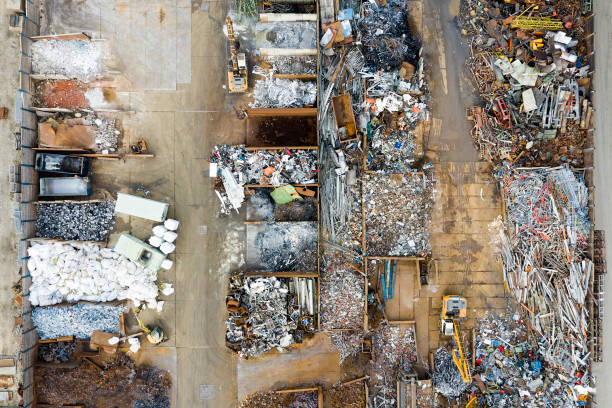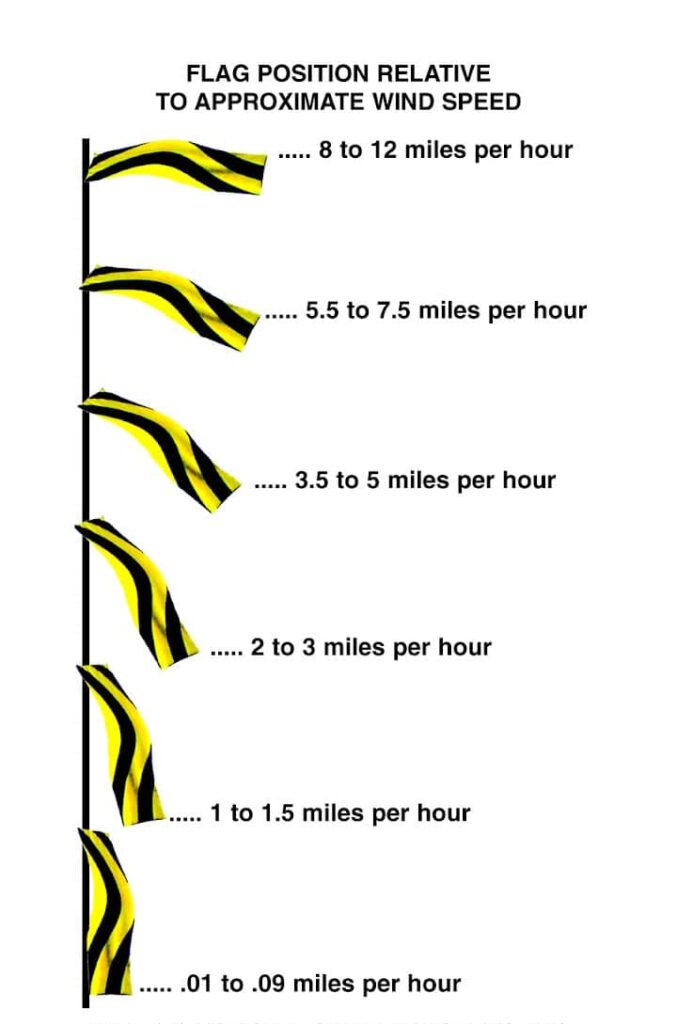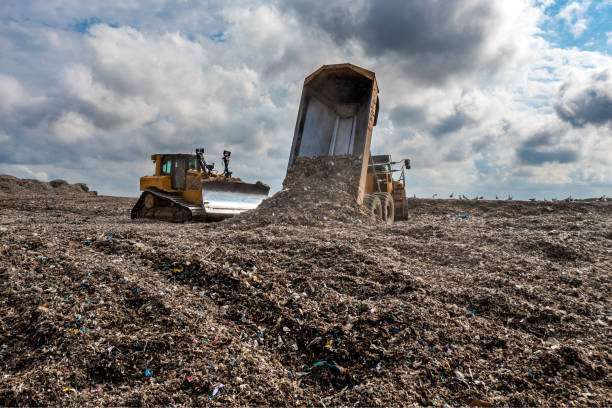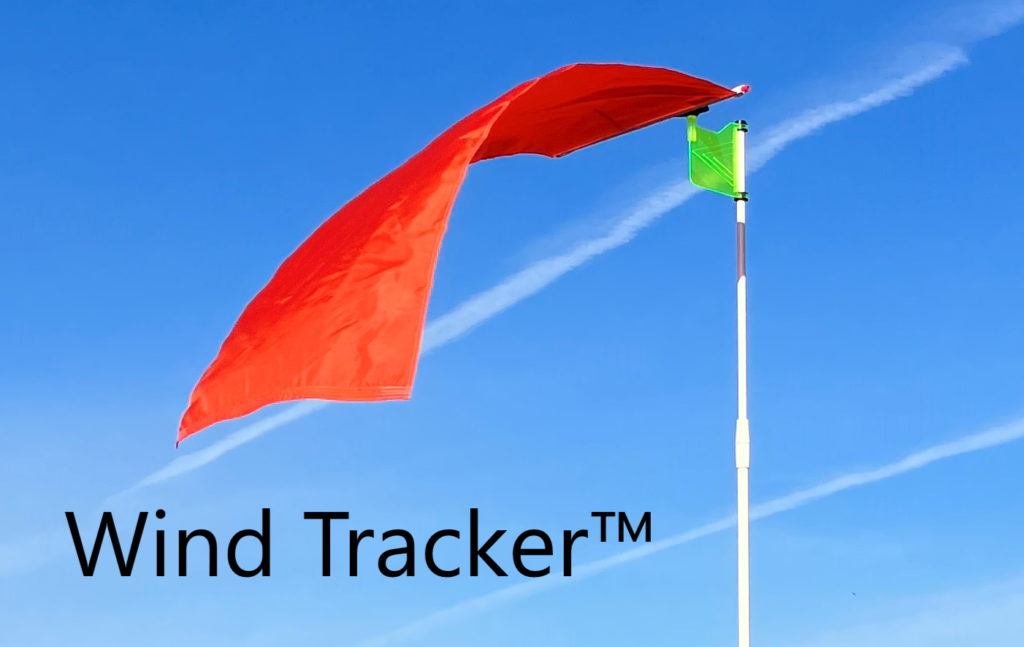Waste Sites
Monitoring Wind Direction for Airborne Contaminants:
Wind Tracker™ Windsocks provide real-time, visible data on wind direction, which is essential at waste sites where airborne contaminants, dust, or gases can be released. By continuously tracking wind conditions, site managers can predict the direction in which harmful substances or odors may travel, allowing for proactive measures to mitigate risks to workers, nearby communities, and the environment.

Safety in Hazardous Material Handling:
Many waste sites handle hazardous materials such as chemical waste, industrial by-products, or potentially toxic substances. Wind Tracker™ Windsocks play a crucial role in ensuring the safe handling of these materials. In the event of a spill, leak, or accidental release of hazardous chemicals, knowing the wind direction is essential for workers to quickly evacuate or establish safe zones, ensuring minimal exposure to harmful gases or vapors.
Fire Risk Management:
Waste sites often contain combustible materials, and fires are a significant risk, especially at sites dealing with organic, chemical, or flammable waste. Wind Tracker™ Windsocks are critical for assessing how wind speed and direction may impact the spread of fire or smoke. This information helps site managers and firefighting teams deploy resources effectively, determine safe areas, and evacuate personnel, ensuring that firefighting efforts are both effective and safe.
Dust and Particulate Control:
Waste sites, especially landfills and construction debris processing areas, often generate large amounts of dust and particulates. Wind Tracker™ Windsocks help predict how these particulates will spread, allowing for the implementation of dust control measures such as water spraying, wind barriers, or the temporary cessation of activities when wind speeds are too high. This reduces health risks to workers and prevents airborne particulates from affecting nearby residential areas or the environment.

Emergency Response and Evacuation Planning:
In emergency situations such as chemical spills, gas leaks, or fires, Wind Tracker™ windsocks are vital for guiding emergency response and evacuation efforts. By providing immediate data on wind direction, windsocks help response teams identify downwind areas at risk of exposure and establish safe evacuation routes for workers and surrounding communities. This real-time information minimizes casualties and environmental damage.
Odor Control and Community Relations:
Waste sites often produce unpleasant odors, which can negatively affect surrounding communities. Wind Tracker™ Windsocks help site operators monitor wind direction and adjust odor mitigation strategies accordingly, such as covering waste piles, adjusting operational schedules, or using odor neutralizing agents when the wind is blowing toward residential areas. Effective odor control is critical for maintaining positive community relations and compliance with local regulations.
Compliance with Environmental Regulations:
Waste sites are subject to strict environmental regulations regarding air quality and the management of pollutants. Windsocks provide critical data for monitoring compliance with these regulations. For example, they help in determining whether emissions or odors are being properly controlled, and whether site operations should be adjusted based on prevailing wind conditions to prevent violations and minimize environmental impact.
Safe Vehicle and Equipment Operations:
Wind can impact the safe operation of heavy machinery, cranes, and vehicles used at waste sites. Strong winds can affect the stability of cranes during lifting operations or cause vehicles to drift when transporting waste. Windsocks provide operators with the necessary information to adjust their speed and operations to account for wind effects, ensuring safe and controlled handling of equipment.

Containment of Airborne Pathogens:
Certain waste sites, such as medical waste or biohazard facilities, handle materials that may contain airborne pathogens. Wind Tracker™ Windsocks help site managers monitor wind direction to prevent the spread of pathogens through the air. Understanding wind patterns helps guide containment measures, such as placing waste in wind-protected areas or adjusting ventilation systems to reduce the risk of pathogen spread.
Training and Preparedness:
Wind Tracker™ Windsocks also play a key role in the training and preparedness of waste site personnel. Workers are trained to interpret wind data and understand how wind direction and speed affect site operations, especially when handling hazardous or combustible materials. Regular drills and preparedness exercises often rely on windsocks to simulate emergency conditions, ensuring that workers are capable of responding appropriately to real-life situations.
Wind Tracker™ Windsocks are a necessary tool at waste sites because they provide essential data on wind direction and speed, which directly impacts the safety and efficiency of waste handling, environmental protection, and emergency response. By helping to predict the movement of airborne contaminants, controlling dust and odor dispersion, managing fire risks, and guiding evacuation procedures, windsocks enhance operational safety and ensure compliance with environmental regulations. They are indispensable for ensuring that waste sites operate safely, efficiently, and in harmony with surrounding communities.
